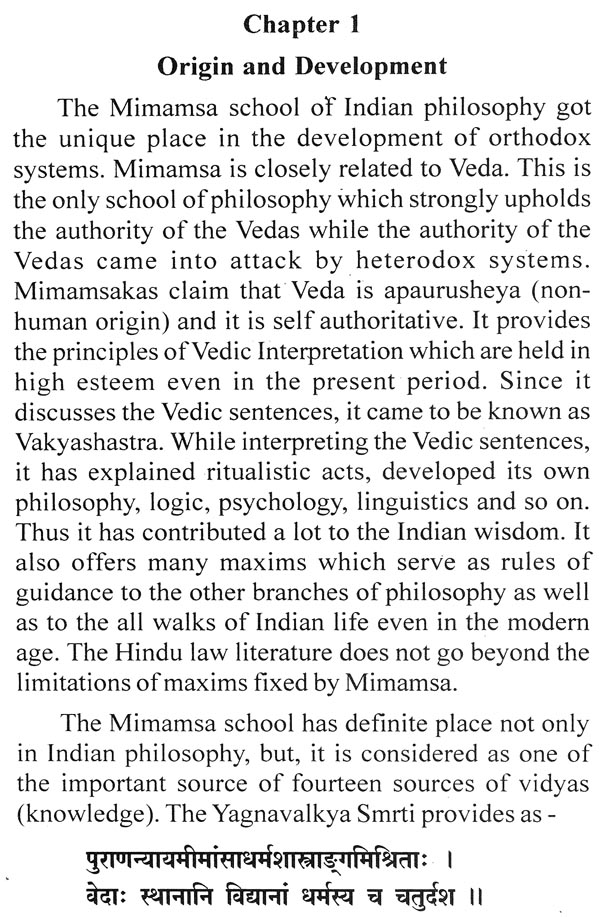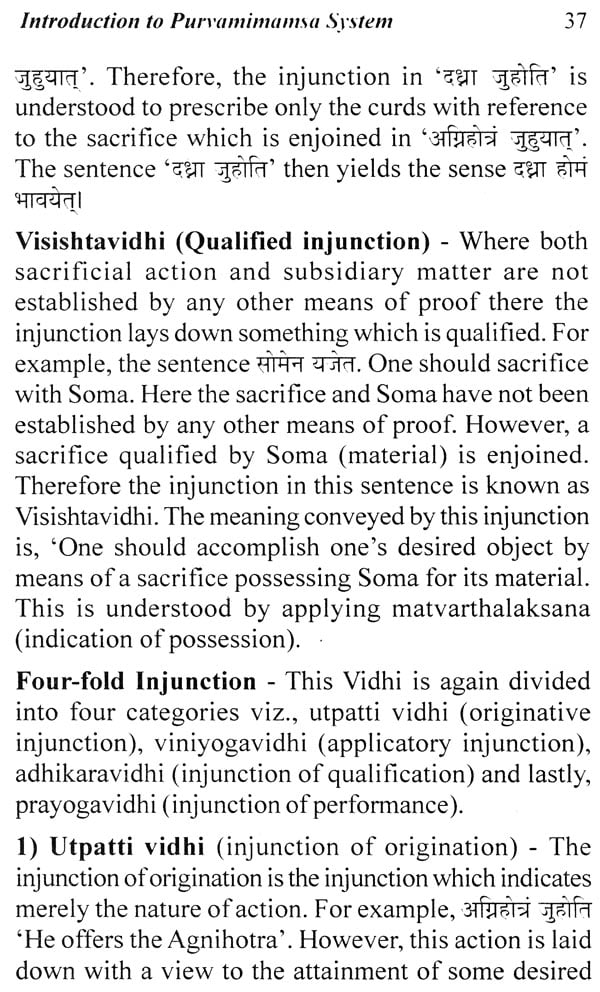
Introduction to Purvamimamsa System
Book Specification
| Item Code: | NAW770 |
| Author: | Shrimad Bhat |
| Publisher: | Tirumala Tirupati Devasthanams, Tirupati |
| Language: | English |
| Edition: | 2018 |
| Pages: | 86 |
| Cover: | PAPERBACK |
| Other Details | 8.50 X 5.50 inch |
| Weight | 90 gm |
Book Description
The most ancient literature available is the Four Vedas - Rig, Yajur, Sama and Atharva Veda. They are noted as 'Apaurusheya', i.e., they were not written by man. It is not known when and where they were made. VedaVyasa later divided them into four Vedas. The origin of it may be an unknown factor, but the known factor is its essence. The Vedas are rich in principles that guide the beings towards happiness and prosperity, which is a contribution to the Indian wisdom.
The school of Mimamsa has a definite place in Indian philosophy. It is one of the important sources of knowledge. Mimamsa is a science of interpretation of the sacrificial portion of the Veda. The whole purpose of Vedas is to engage human beings in rituals for creating good karma. The Purvamimamsa school was systematized by Jaimini.
Jaimini in Mimamsa Sutra, presents material activity and it's results as the whole of reality. His interpretations provide Philosophical justifications for the observance of Vedic rituals, to attain Moksha.
This book entitled 'Introduction to Purvamimamsa system’ is a good book to be read and enjoyed. It provides many facts about the Mimamsa system and its history. Hope that this book be of great use to both the elderly and students.
Tirumala Tirupati Devasthanam has proposed to publish various books under 'Ancient Indian Culture Series' and Prof. Shrihari approached me to write a book on 'Purvamimamsa Darshana' with certain limitations. As per the requirement, an attempt is made .here to write in simple language which may help to the common reader in understanding the subject. This consists of origin and development, a brief history, differences between Kumarila and Prabhakara schools, contents, pramanas and some prameya topics.
I am thankful to Prof. Shrihari who assigned this work to me and gave guidance for the same. I am also thankful to Prof. P.G. Lalye who suggested my name for this work and encouraged me to complete the task. I also thank Mr. Rohit Karande who helped me in computerising the work. Finally, I express my thanks to those who helped me directly or indirectly to complete the book.
Book's Contents and Sample Pages










